The majestic Siberian Tiger, also known as the Amur Tiger, is a symbol of raw power and beauty in the animal kingdom. Roaming primarily in the Russian Far East, with a few crossing into China and possibly North Korea, this big cat commands respect and awe. However, beneath its striking orange and black stripes lies a story of survival and vulnerability. The Siberian Tiger is an endangered species, with its population precariously hovering around 560 in the wild.
Imagine a world where these magnificent creatures once roamed freely across vast territories. Today, their domain is significantly reduced, confined to a fraction of their original habitat. This reduction is not just a loss for the tiger but for the biodiversity of our planet. The Siberian Tiger’s struggle for survival is a poignant reminder of the delicate balance of our ecosystem and the impact of human activities on wildlife.
The Siberian Tiger’s geographical range is a testament to its adaptability and resilience. These tigers have made a home in the harsh, cold climate of the Russian Far East, a region that poses significant challenges to survival. Their ability to thrive in such conditions speaks volumes about their strength and evolutionary prowess.
How Big Is A Siberian Tiger
Historical Perspective on Size Estimates

The Siberian Tiger’s size has always been a subject of fascination and, often, grandiose exaggeration. For decades, the narrative surrounding this magnificent creature was more myth than reality, shaped largely by unconfirmed hunting reports and tales that bordered on the fantastical.
In the early and mid-20th century, when scientific data on these elusive big cats was scarce, hunters’ tales were the primary source of information. These stories, passed down through generations, painted a picture of a creature of almost mythical proportions. One such report by Russian naturalist Vyacheslav Sysoyev in 1950 mentioned a male Siberian tiger weighing a staggering 384 kilograms (846 pounds) – a figure that strains credulity.
Similarly, Bakyov’s reports from Manchuria spoke of tigers weighing between 390 and 400 kilograms (860 to 880 pounds). Another account from 1943 described a wild male killed near the Sungari River in Manchuria, measuring 350 cm “over the curves” and weighing about 300 kg (660 lb). These figures, while awe-inspiring, were largely unverified and contributed to a growing legend rather than a factual understanding of the species.
It’s important to recognize these reports for what they were: a blend of truth, exaggeration, and the human tendency to amplify the prowess of the hunted. This phenomenon wasn’t unique to the Siberian Tiger; similar exaggerations were common in tales of lions and Bengal tigers. The lack of scientific rigor in these early accounts left a gap in our understanding, filled instead by narratives that leaned more towards folklore than fact.
Challenges in Early Research
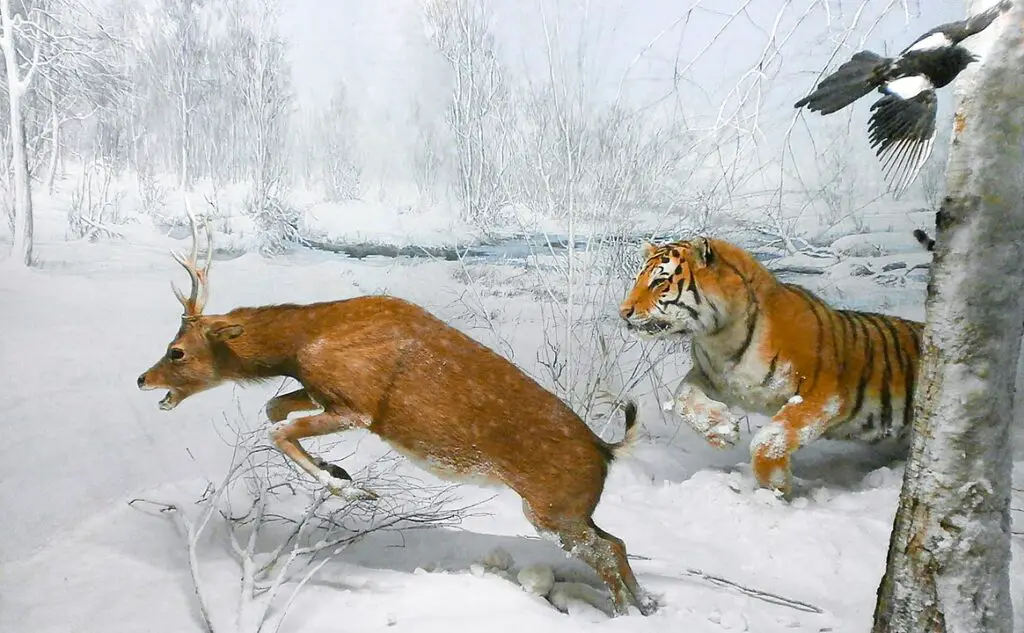
The quest to understand the true size of the Siberian Tiger before the 1990s was fraught with challenges, akin to piecing together a puzzle with many missing pieces. The primary hurdle in this endeavor was the heavy reliance on unverified hunting reports, which, while rich in narrative, were poor in scientific accuracy.
In the absence of modern research techniques and conservation efforts, early researchers had little to go on besides these anecdotal accounts. These stories, often passed down orally or through hunting logs, were the only glimpses into the life and characteristics of the elusive Siberian Tiger. However, they were riddled with inconsistencies and lacked the rigor of systematic study.
The remote and harsh terrain of the Siberian wilderness added another layer of complexity. Conducting field research in such an environment was not only challenging but also dangerous, limiting the opportunities for direct observation and study. This meant that for much of the 20th century, the Siberian Tiger remained a mysterious and poorly understood creature.
Moreover, the political and social climate of the time also played a role in hindering research. In the Soviet era, access to the Siberian Tiger’s habitat was restricted, and wildlife research was not a priority. This lack of access and focus meant that scientific studies were few and far between, leaving a void filled by the unverified claims of hunters.
The reliance on hunting reports, therefore, was not just a matter of choice but a necessity borne out of the limitations of the time. These reports, while they did provide some insights, were often colored by the hunters’ desire to boast about their conquests, leading to exaggerated claims about the size and weight of the tigers they encountered.
Modern Scientific Research and Findings

The dawn of the 1990s marked a significant turning point in our understanding of the Siberian Tiger, thanks to the pioneering efforts of the Siberian Tiger Project. Initiated in 1992 by the Wildlife Conservation Society (WCS) in collaboration with the Sikhote-Alin Reserve, this project represented a monumental leap forward in tiger research and conservation.
The Siberian Tiger Project brought a level of scientific rigor and methodology previously unseen in the study of these magnificent creatures. Utilizing radio-telemetry, a technology that allows for the tracking of animals in the wild through radio signals, researchers were able to gather data on the tigers’ movements, behavior, and, crucially, their physical characteristics.
This hands-on approach enabled the team to study over 60 tigers since the project’s inception, providing an unprecedented depth of insight into the species. Every aspect of the Siberian Tiger’s morphology and behavior was meticulously recorded and analyzed, shedding light on their true size in the wild.
The findings of the Siberian Tiger Project painted a different picture from the historical accounts. According to their research, the average weight of current wild male Amur Tigers was found to be around 190 kg (418 lb). The largest specimen captured during the project weighed 206 kg (454 lb), while the heaviest radio-collared male tipped the scales at 215 kg (474 lb).
These figures stand in stark contrast to the exaggerated claims of the past. The project’s data, grounded in scientific methodology and extensive field research, provided a much-needed corrective to the myths and legends that had long surrounded the Siberian Tiger’s size.
It’s important to note that while the sample size of the Siberian Tiger Project was significant, it was not exhaustive. However, in nearly three decades of research involving a substantial portion of the current Siberian Tiger population, no evidence was found of a specimen exceeding 215 kg.
Average Size of Wild Male Amur Tigers Today

Today, the average wild male Amur Tiger, as revealed by the Siberian Tiger Project, weighs in at around 190 kg (418 lb). This figure is a far cry from the exaggerated weights of over 300 kg often touted in historical accounts and popular lore. The project’s findings underscore the importance of evidence-based understanding, especially in the realm of wildlife biology where myths can easily overshadow facts.
The largest specimen captured and studied by the project weighed 206 kg (454 lb), demonstrating that while the Siberian Tiger is indeed a large and powerful animal, it does not reach the mythical sizes once claimed. Furthermore, the heaviest radio-collared male recorded by the project was 215 kg (474 lb), setting a more realistic upper limit to the size that these tigers can attain in the wild.
These figures are not just numbers; they represent a significant stride in our comprehension of the Siberian Tiger’s ecology. Understanding the average size of these tigers is crucial for several reasons. It helps in assessing their health and well-being, understanding their hunting and feeding habits, and, importantly, in making informed decisions for their conservation.
The data from the Siberian Tiger Project also provides a baseline for comparing the size of Siberian Tigers over time. This is vital in monitoring the impact of environmental changes and human activities on their physical development. It’s a tool for conservationists to gauge the effectiveness of their efforts and to adjust strategies as needed to ensure the survival and health of this endangered species.
Comparison with Historical Data
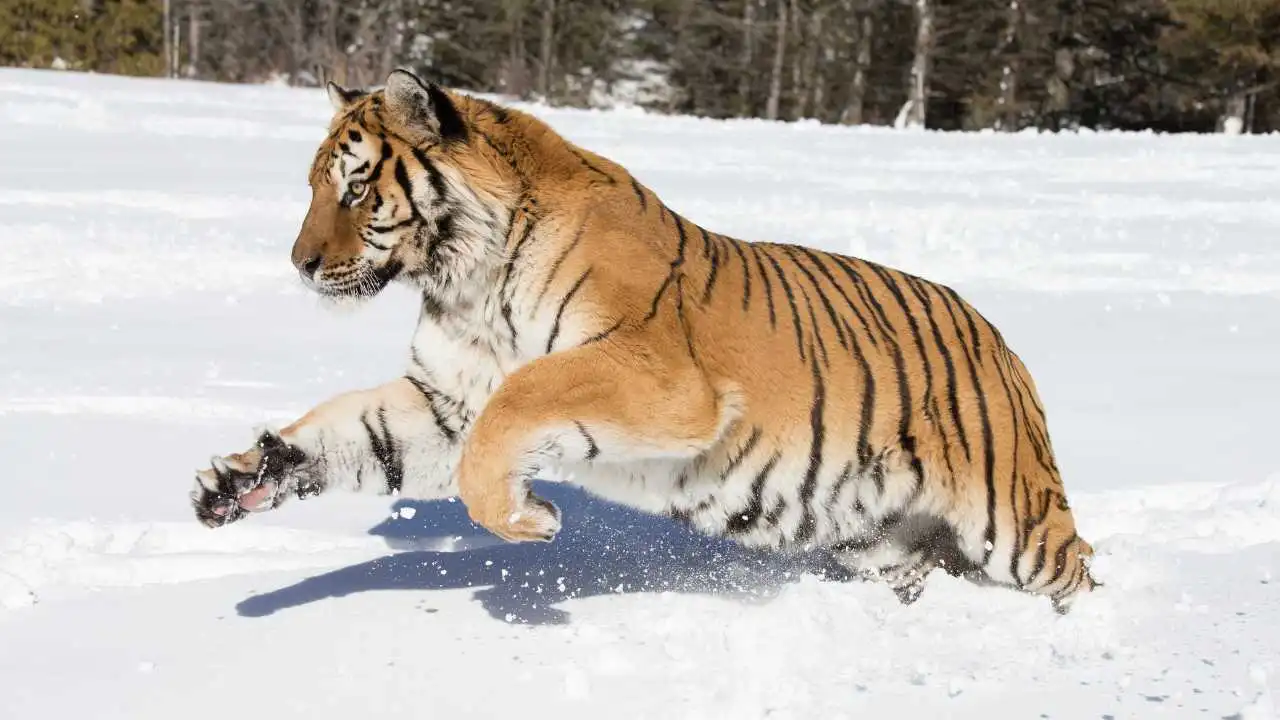
Historically, the size of the Siberian Tiger was often the subject of exaggeration and myth. Early reports, largely based on hunting tales, suggested that these tigers could reach astonishing weights of up to 384 kg (846 pounds) or more. These figures were passed down through generations, growing in legend but lacking in scientific validation. The allure of the hunt and the prestige associated with bagging a large tiger often led to inflated claims, painting a picture of the Siberian Tiger that was more fiction than fact.
Contrast this with the findings of the Siberian Tiger Project in the 1990s and beyond. This comprehensive study, using modern tracking and observation techniques, revealed that the average weight of a wild male Amur Tiger is around 190 kg (418 lb), with the largest recorded specimen weighing 215 kg (474 lb). This stark contrast highlights not just a difference in numbers, but a divergence in understanding.
The reasons for this discrepancy are manifold. Firstly, the early reliance on anecdotal and unverified reports left much room for exaggeration. Without scientific methods to accurately measure and record tiger sizes, these reports were unchecked and often sensationalized. Secondly, the historical context of tiger hunting, where size was a badge of honor, further fueled these exaggerations.
On the other hand, the scientific approach of the Siberian Tiger Project brought rigor and precision to the study of these animals. By tracking and studying live tigers in their natural habitat, researchers were able to gather accurate data, free from the biases and inaccuracies inherent in historical hunting reports.
Genetic Impoverishment and Size Reduction
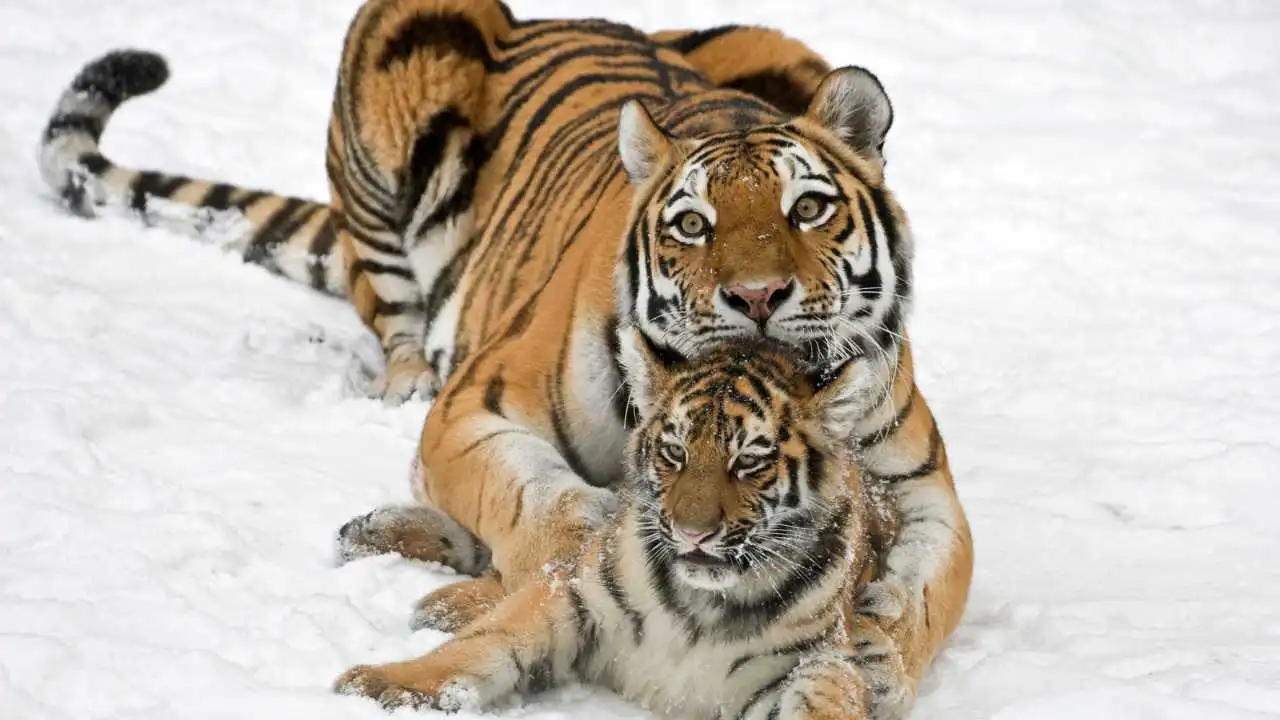
A compelling aspect of the Siberian Tiger’s story is the theory that the modern specimens are smaller than their historical counterparts, a change attributed to factors like hunting, poaching, and genetic impoverishment. This theory offers a poignant insight into how human activities can leave an indelible mark on wildlife, not just in numbers but also in their very nature.
The concept of genetic impoverishment suggests that due to extensive hunting and poaching, particularly in the past centuries, the larger specimens of Siberian Tigers were systematically removed from the gene pool. These activities often targeted the biggest and most impressive tigers, a practice that inadvertently selected against larger size over generations. As a result, the genetic diversity of the species dwindled, and with it, the genes responsible for the larger size may have been lost or reduced in prevalence.
This reduction in genetic diversity is not just a theoretical concern. It has tangible implications for the health and survival of the species. Genetic diversity is crucial for the adaptability and resilience of a species, allowing it to cope with changes in the environment and resist diseases. A gene pool that is diminished and homogenized leaves the species vulnerable to a host of challenges, from environmental changes to outbreaks of illness.
Moreover, the theory of size reduction due to genetic impoverishment is supported by some reliable, albeit non-scientific, records from the early to mid-20th century. These records suggest that wild specimens weighing around 250 kg were not uncommon, a stark contrast to the maximum weights observed in recent studies. While these records are not as scientifically rigorous as modern data, they offer a glimpse into a past where larger Siberian Tigers may have been more prevalent.
It’s important to note that this theory is not without its complexities. Environmental factors such as habitat depletion and shortage of prey also play a significant role in the physical development of these tigers. The harsh reality of a diminished habitat and reduced prey availability can stunt growth and lead to smaller body sizes.
Reliable Records from 1900-1970
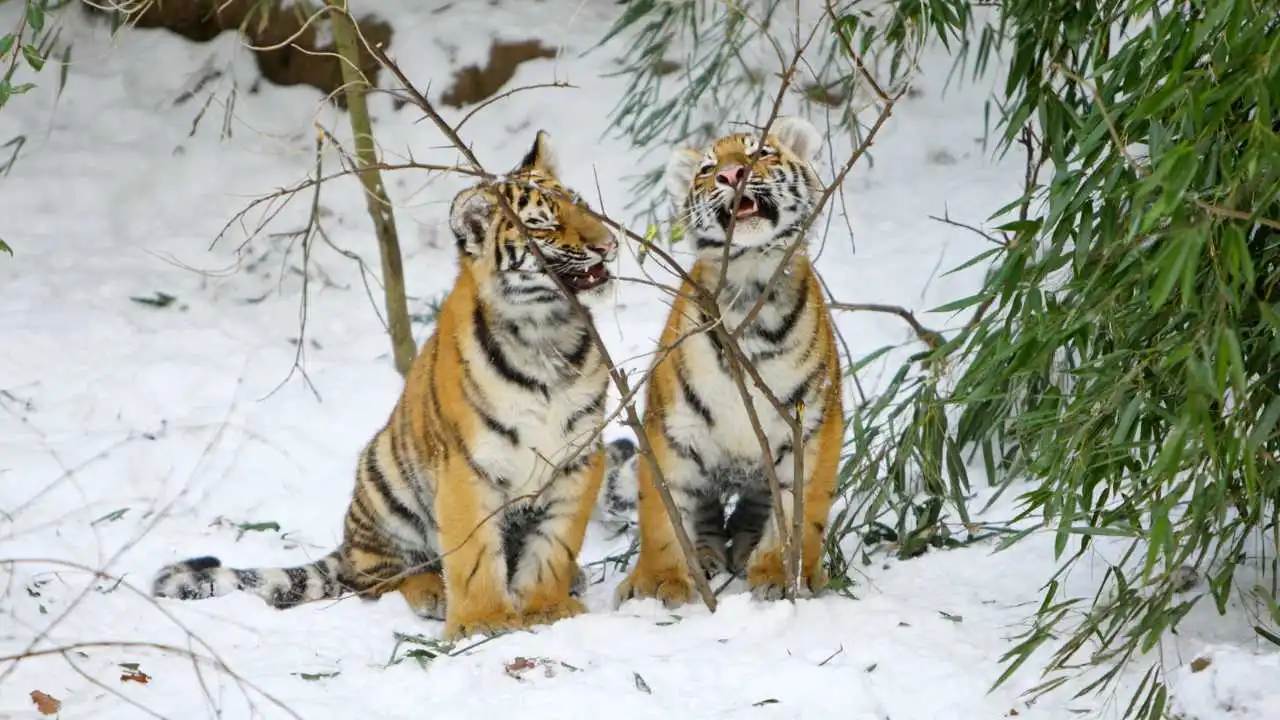
While the early to mid-20th century was a time rife with exaggerated tales about the Siberian Tiger, it also left us with some more reliable, albeit non-scientific, records. These accounts, though lacking the precision of modern scientific methods, provide a valuable historical context and offer insights into the size and nature of Siberian Tigers during this period.
One of the more credible sources from this era includes records from naturalists and explorers who observed these tigers in their natural habitats. Unlike the hunters’ tales that often aimed to glorify personal achievements, these observations were generally more objective, focusing on the tiger’s behavior, environment, and physical characteristics.
For instance, there are documented sightings and reports of wild Siberian Tigers that suggest an average weight significantly higher than what we see today. These accounts often describe adult male tigers weighing around 250 kg, a figure that aligns more closely with the upper range of modern scientific findings but still indicates a larger average size in the past.
Photographic evidence from this period also provides some clues. Although it’s challenging to accurately gauge size from photographs, especially without a consistent frame of reference, these images offer a visual record of the Siberian Tiger’s presence and general physique during this time.
Additionally, records from zoos and wildlife reserves, where tigers were held in captivity, contribute to our understanding of their size. While these environments differ significantly from the wild and can affect an animal’s growth and health, they nonetheless provide a controlled setting where measurements could be taken more reliably.
It’s important to approach these historical records with a critical eye, understanding their limitations and the context in which they were created. They lack the systematic approach and technological advantages of modern studies, but they still hold value as pieces of the puzzle in understanding the history and evolution of the Siberian Tiger.
Misconceptions and Popular Beliefs

The narrative surrounding the Siberian Tiger is not just shaped by scientific studies and historical records, but also by a plethora of misconceptions and popular beliefs. These misconceptions often stem from outdated information, sensationalized stories, and a slow adaptation of popular culture to the latest scientific findings.
One of the most enduring misconceptions is the belief that the Siberian Tiger is the largest feline in the world, capable of reaching weights of up to 400 kg (882 lb) or more. This belief has been perpetuated by a mix of historical exaggerations and a lack of awareness about current scientific data. While the Siberian Tiger is indeed one of the largest big cats, the weights reported in exaggerated accounts far exceed those documented by rigorous scientific research.
The internet and popular media play a significant role in the perpetuation of these myths. Many websites and articles continue to cite outdated or unverified information, often prioritizing sensationalism over accuracy. This misinformation is then consumed and shared by the public, creating a cycle that’s hard to break. The slow pace at which popular sites update their information to reflect current scientific understanding further exacerbates this issue.
Another common misconception relates to the physical capabilities and behavior of the Siberian Tiger, often portrayed as a near-mythical creature with almost supernatural prowess. While the Siberian Tiger is an incredibly powerful and adept hunter, some of the attributes ascribed to it in popular culture are exaggerated or unfounded.
Addressing these misconceptions is crucial for several reasons. Firstly, they can skew public perception and understanding of the species, leading to misguided opinions and attitudes. Secondly, they can impact conservation efforts. Misinformation can lead to misplaced priorities or ineffective conservation strategies that don’t address the real challenges faced by these tigers.
The challenge, therefore, lies in bridging the gap between scientific knowledge and public awareness. This involves not only disseminating accurate, up-to-date information but also engaging with the public in a way that is accessible and compelling. Conservation organizations, scientists, educators, and media outlets all have a role to play in this endeavor.
The Role of Captivity in Size
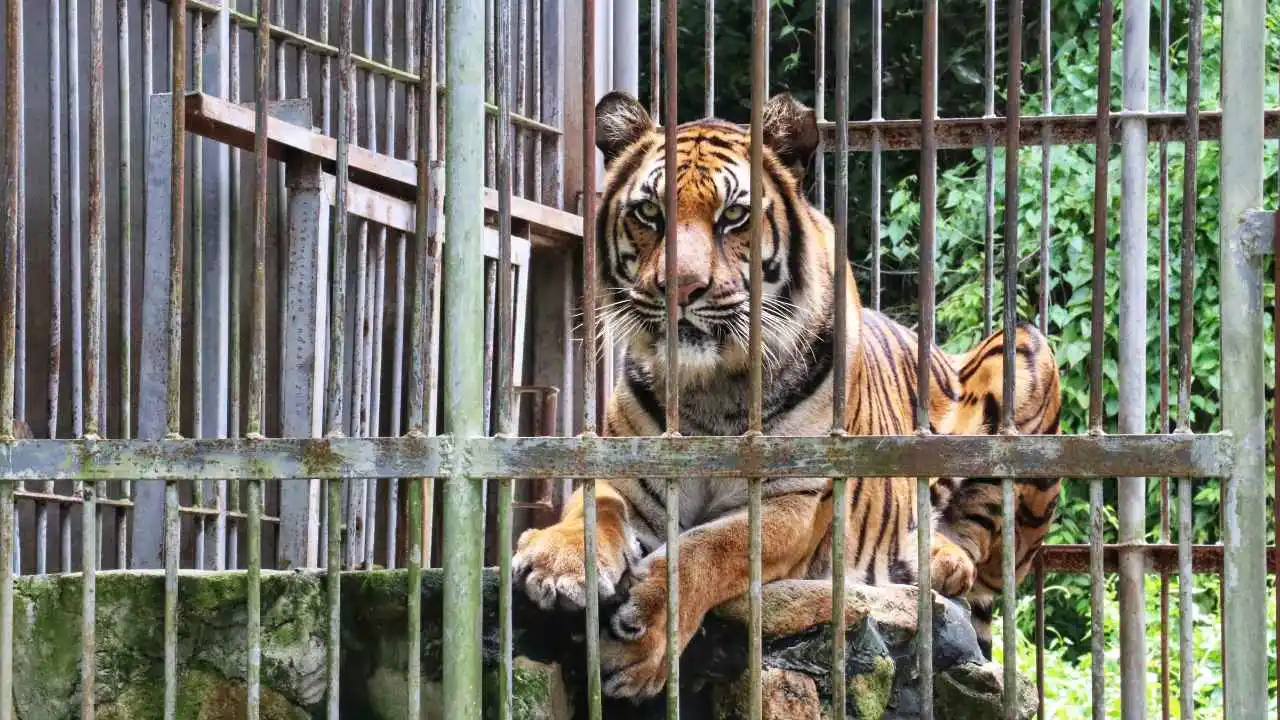
The phenomenon of Siberian Tigers growing larger in captivity compared to their wild counterparts is a fascinating aspect of their biology and ecology. This difference in size is not merely a result of random variance but is influenced by several factors specific to the captive environment, including diet, lifestyle, and genetic predisposition.
One of the primary reasons for the increased size of captive Siberian Tigers is the abundance and consistency of food. In the wild, tigers face the challenges of hunting and the unpredictability of food availability. This natural setting requires them to expend significant energy in tracking and capturing prey, and there are periods when food is scarce. In contrast, tigers in captivity receive a steady supply of food, often high in calories and nutrients, without the need for strenuous hunting. This consistent and effortless access to food contributes to weight gain and larger body size.
Another factor is the lack of space and reduced need for physical activity in captivity. Wild Siberian Tigers cover large territories and are constantly on the move, whether for hunting, mating, or establishing their domain. This constant activity contributes to a leaner physique. In captivity, however, the limited space and lack of necessity to hunt or defend territory result in less physical activity, leading to weight gain.
Genetic predisposition also plays a role in the size of Siberian Tigers in captivity. These tigers, particularly those adapted to the harsh Siberian climate, have evolved to store more fat as a survival mechanism against the cold. This genetic trait, combined with the factors of abundant food and less exercise, can lead to captive tigers developing a much bulkier physique than their wild counterparts.
It’s important to note that while captive tigers may grow larger, this does not necessarily equate to better health. In fact, excessive weight gain can lead to health issues, just as it can in humans. The obesity seen in some captive tigers is a form of animal welfare concern and should not be mistaken for a sign of a healthy or superior specimen.
Moreover, the size of captive tigers can sometimes give a skewed perception of the species as a whole. It’s crucial to understand that the conditions in captivity do not accurately reflect the natural lifestyle or ecological adaptations of these animals in the wild.
Conclusion
The journey through the world of the Siberian Tiger, from the realms of myth and exaggeration to the clarity of scientific understanding, underscores a fundamental truth: the importance of relying on proven and reliable scientific data in wildlife research. The case of the Siberian Tiger’s size is a compelling example of how science can dispel myths and bring us closer to the truth about these magnificent creatures.
The historical perspective, rife with unverified hunting reports and folklore, painted a picture of the Siberian Tiger that was more fiction than fact. It was only with the advent of projects like the Siberian Tiger Project, employing rigorous scientific methods and technologies, that a true understanding of the tiger’s size was realized. This shift from anecdote to evidence has not only corrected misconceptions but has also provided a solid foundation for effective conservation strategies.
The average size of wild male Amur Tigers today, as revealed by scientific studies, may not match the exaggerated figures of lore, but it is impressive and awe-inspiring in its own right. Understanding the true size of these tigers is crucial for multiple reasons. It helps in assessing their health, understanding their ecological needs, and ensuring that conservation efforts are appropriately tailored to their real-world requirements.
Furthermore, the discussion around the role of captivity in the size of Siberian Tigers and the potential impact of genetic impoverishment and environmental changes on their physical development highlights the dynamic nature of wildlife biology. It reminds us that animal species are not static entities but are constantly adapting to their environments and the pressures placed upon them, both natural and human-induced.
Sources:
- Britannica – Siberian tiger | Size, Habitat, Population, & Facts: Offers detailed information on the size, habitat, and population of the Siberian Tiger. Visit Source
- Study.com – Siberian Tiger Characteristics, Lifespan & Habitat: Provides insights into the lifespan, size differences, and habitat of the Siberian Tiger. Visit Source
- WildFact – Size and weight Siberian tiger: Discusses the size and weight of the Siberian Tiger with references to reliable reports and scientific data. Visit Source
- National Geographic – Siberian Tiger: National Geographic’s page on the Siberian Tiger, renowned for its comprehensive and accurate wildlife information. Visit Source
- Russian Geographical Society – About the Siberian tiger: Offers detailed information about the Siberian Tiger, including size, weight, and conservation efforts. Visit Source
- Wikipedia – Siberian tiger: Provides a comprehensive overview, including measurements taken by scientists of the Siberian Tiger Project. Visit Source


Leave a Reply